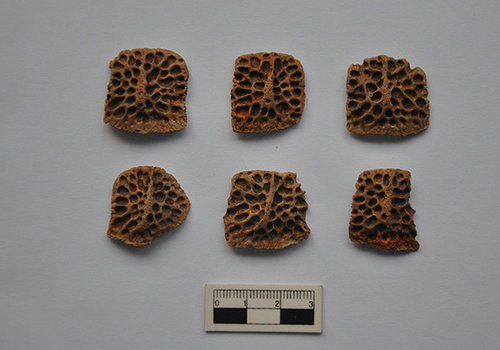Ancient crocodile bones discovered in Xi'an
 |
|
Ancient crocodiles bones were unearthed at the Haojing site in Xi'an, Shaanxi province.Provided To China Daily |
Ancient bones unearthed in Xi'an, capital of Shaanxi province, have led archaeologists to suggest that the area may have been home to wild crocodiles thousands of years ago.
Experts have been excavating the Haojing site since the 1930s, with the latest dig running from 2012 to last year.
The site was once the capital of the Western Zhou Dynasty (c.11th century-771 BC), with countless relics having been discovered there over the years. However, the ancient crocodile bones took archaeologists by surprise.
The bones were discovered in an ash pit late last year, according to the Shaanxi Archaeology Institute, which is leading the excavation in Xi'an's southwestern Chang'an district. "The archaeologists were surprised because it's the first time crocodile bones have been unearthed near the city," it said.
An ash pit is a general term used by experts to describe an ancient cave or cellar. The one in which the bones were found was of an irregular shape, covering more than 10 square meters, according to Yue Lianjian, head of the excavation team and director of the institute's research division for the Shang (c.16th century-11th century BC) and Western and Eastern Zhou (c.11th century-256 BC) dynasties.
"Each piece of bone was about the size of a mahjong tile, and zooarchaeologists were able to determine that they were from a crocodile," Yue said.
Crocodiles are large, coldblooded aquatic reptiles and one of the most primitive creatures still in existence. Bones from crocodiles dating back to the Western and Eastern Han dynasties (206 BC-220 AD) have been unearthed in southern China, but the most recent discovery was the first of its kind in Shaanxi.
"Most crocodiles live in rivers, lakes and marshes in tropical and subtropical regions. So we now believe there may have been a large body of water, perhaps a lake, in the southeast region of the Haojing site. Archaeologists also unearthed a number of clamshells and ceramic fishnet weights at the site, which suggests that in ancient times, the area had a humid climate and plenty of lakes," Yue said.
"It wouldn't be unusual to find wild crocodiles in such natural conditions," Yue said, adding that the latest discovery provides important information on the ecological distribution of crocodiles during the Western Zhou Dynasty.
During the excavation last year, archaeologists unearthed 102 ash pits, 10 tombs, four wells, two pottery kilns and one house, as well as a large amount of pottery, bronze, stone, bone, shell and horn.
In addition, many well-preserved wheat grains were found in the ash pits, another first for the Haojing site, offering vital information on crop varieties and the agricultural methods used during the Western Zhou Dynasty.

- Public security bureau backs app for citizens to report suspicious behavior
- Five stories to inspire love on Valentine’s Day
- Eleven miners trapped in Central China coal mine blast
- Eight dead in Central China coal mine blast
- China orders medical security campaign following malpractice-caused HIV infections


















